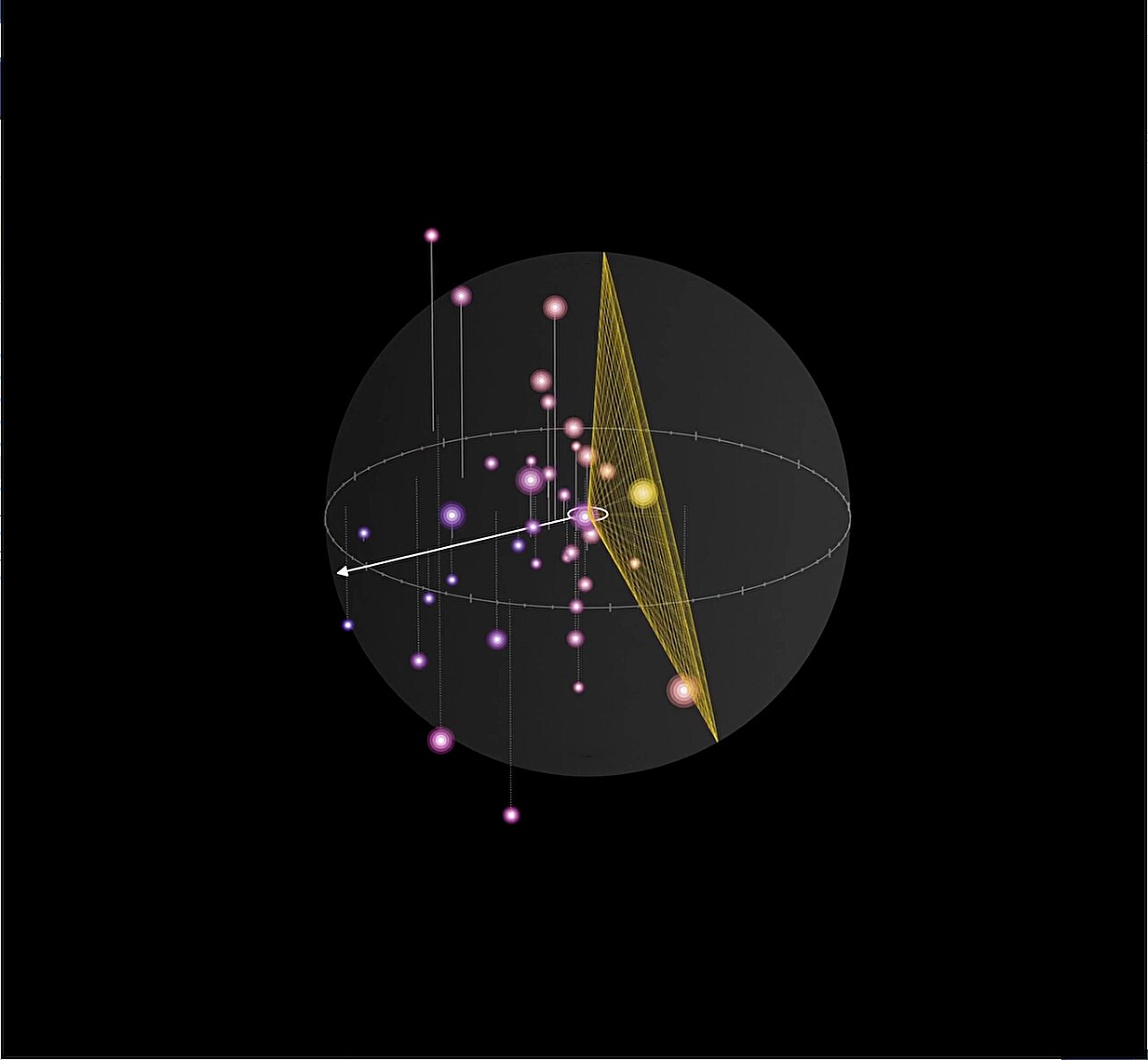The Andromeda Galaxy is surrounded by a constellation of dwarf satellite galaxies that are arranged in an extremely asymmetrical manner. Simulations have shown that such a distribution is found in only 0.3% of similar galaxies, raising questions about its nature.

The spatial distribution of galaxies provides crucial insights into cosmology and dark matter physics. According to the standard cosmological model, small galaxies merge chaotically over time to form larger galaxies. The result of this process is swarms of dim dwarf galaxies that orbit their massive host galaxies in an almost random pattern.
However, a new study from the Leibniz Institute for Astrophysics shows that the satellite galaxies of the neighboring Andromeda Galaxy have surprising and hitherto unexplained properties. It is still unclear whether this peculiar configuration poses a significant challenge to the current cosmological model, or whether it is within the realm of possibility.
The scientists used two simulations for their study, analyzing the distribution of Andromeda’s satellite galaxies. Comparing their actual configuration with the simulation showed it to be highly unusual. Instead of being randomly scattered, as predicted by the standard cosmological model, more than 80% of dwarf galaxies are centered on one side of the Andromeda Galaxy. In particular, all but one of Andromeda’s satellites lie within 107 degrees of a line pointing to the Milky Way. This area covers only 64% of its surroundings.

According to the researchers, only one of the three hundred systems they modeled, has the same extreme asymmetry as the Andromeda Galaxy. This makes it an extreme outlier, contrary to cosmological expectations.
Andromeda’s asymmetry becomes even more mysterious when combined with another of its unusual features: half of its satellite galaxies orbit as a thin, flat structure. This is similar to the way the planets orbit around the sun, moving in the same plane. The existence of such a plane for satellite galaxies and their asymmetric distribution is highly unexpected for the standard cosmological model.
This discovery raises the question of whether Andromeda is unique, or whether it is all about the lack of accuracy of the simulations, which are limited by the available knowledge of stellar physics and galaxy evolution. To answer this question, scientists plan to study other galaxies using data from next-generation surveys like the one performed by the Euclid telescope. In addition, astronomers plan to continue observing Andromeda to better understand exactly its formation.
According to Phys.org


